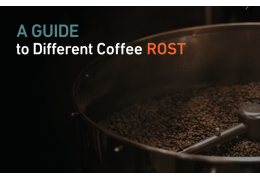In the bustling world of bakeries and restaurants, commercial foodservice equipment plays a crucial role in the...
How to Design a Restaurant Menu?
1. Understand Your Concept and Target Audience
Before starting the menu design process, it's crucial to have a clear understanding of your restaurant concept and target audience. Consider the cuisine style, theme, and atmosphere of your restaurant. Determine the preferences, demographics, and expectations of your target customers to create a menu that resonates with them.
2. Organize Sections and Categories
Divide your menu into logical sections and categories to make it easy for customers to navigate. Group similar items together, such as appetizers, main courses, desserts, and beverages. Consider including special sections for vegetarian or gluten-free options to cater to specific dietary preferences.
3. Keep it Simple and Readable
Ensure that the menu design is visually appealing and easy to read. Use legible fonts, appropriate font sizes, and contrasting colors to enhance readability. Avoid cluttering the menu with excessive text or complicated layouts. Instead, opt for a clean and organized design that allows customers to quickly scan and understand the menu.
4. Highlight Signature Dishes and Specials
Showcase your restaurant's unique offerings and signature dishes prominently on the menu. Use eye-catching design elements such as borders, icons, or illustrations to draw attention to these items. Consider featuring daily or seasonal specials to create a sense of excitement and encourage customers to try new dishes.
5. Provide Descriptive and Engaging Descriptions
Accompany each menu item with descriptive and engaging descriptions. Use concise and enticing language to highlight the key ingredients, cooking techniques, or flavor profiles of the dishes. Incorporate storytelling elements or creative language that reflects the personality and style of your restaurant.
6. Consider Visual Elements
Incorporate visual elements such as high-quality food photography or illustrations to enhance the menu's appeal. Visual representations of dishes can entice customers and give them a better idea of what to expect. Ensure that the images accurately represent the actual food and are of professional quality.
7. Pricing and Formatting
Carefully consider the pricing and formatting of your menu items. Use pricing strategies that align with your restaurant concept and target audience. Avoid using excessive dollar signs or decimal points, as they can distract customers from the menu items. Instead, format the prices in a clear and concise manner.
8. Update and Revise Regularly
Keep your menu fresh and relevant by updating and revising it regularly. Introduce seasonal or limited-time offerings to provide variety and keep customers engaged. Incorporate customer feedback and monitor the popularity of menu items to make informed decisions about menu changes.
9. Print and Digital Formats
Consider both print and digital formats for your menu. Print menus should be of high-quality materials and durable enough to withstand regular use. Digital menus can be displayed on your website, social media platforms, or through digital menu boards within your restaurant. Ensure consistency in design across different formats.
10. Test and Gather Feedback
Once the menu design is complete, test it with a small group of customers or staff members. Gather feedback on the overall layout, readability, and organization of the menu. Use this feedback to make any necessary adjustments or improvements before finalizing the design.
Designing a restaurant menu is a creative process that requires careful consideration of various elements. By following these steps, you can create a visually appealing and well-structured menu that showcases your restaurant's offerings and enhances the dining experience for your customers.
.png)







Leave a comment